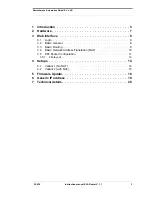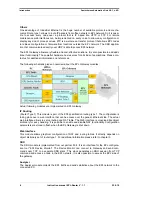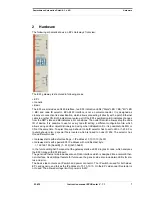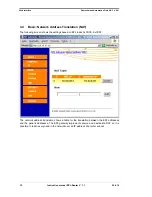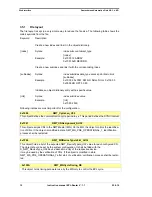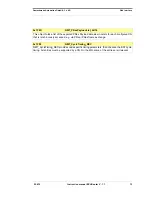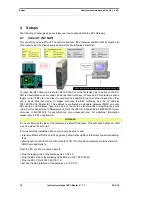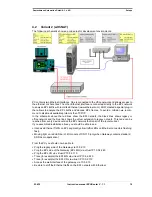
23.4.10
Instruction manual EPL-Router V. 1.1
11
Deutschmann Automation GmbH & Co. KG
Web interface
3.5
EPL Router Configuration
With the node ID switch it is possible to setup different kinds of devices. The EPL Router Firm-
ware allows an easy configuration from the file. On both sides of the Gateway there is an active
FTP server. Over following Login you are able to connect:
Username
test
Password
test
The file system contains following Files:
File PROJECT.HEN is the program that actually runs on this device. For a remote update please
replace this file by a new program and reset the device. "cfgXX.txt" files are used to configure
EPL devices. Depending on the node one of these files is used for node configuration
(240=cfgMN.txt (not supported)/ 254=cfgRT.txt / other cfgCN.txt). "ftp_accounts.txt" includes
login information for ftp server. To establish other configurations, replace corresponding file.
NAT
NAT is principally used because public IP addresses running out in bigger networks. NAT
allows using private IP addresses in an internal network. Every request, which is sent over a
NAT gateway, gets a new IP source address. Frames, which come to a network over a NAT
gateway, get a correct destination IP address from the NAT table. There are two different kinds
of NAT, 1-1 and 1-n NAT.
1-1
This version is also called basic NAT. Private IP addresses are directly mapped into public net-
work. E.g. IP address 192.168.0.1 is a private IP. With NAT this private IP will be translated to a
public IP, e.g. 200.0.20.1. This mechanism allows the device with IP 192.168.0.1 to access the
internet. The private IP addresses are not routed, but with NAT the device gets a public IP and
reaches every other device with a public IP. This is also the way EPL Router Type 1 works (For
additional information please refer to the EPL specification).
1-n
This version is called hidden NAT, because one public IP represents a network of several pri-
vate IP addresses. It is not possible to detect how many devices are behind this IP address
because every outgoing frame source IP is replaced by a gateway IP and every incoming
frame destination IP is replaced by an individual device IP. This kind of NAT is used in every
standard office router.



